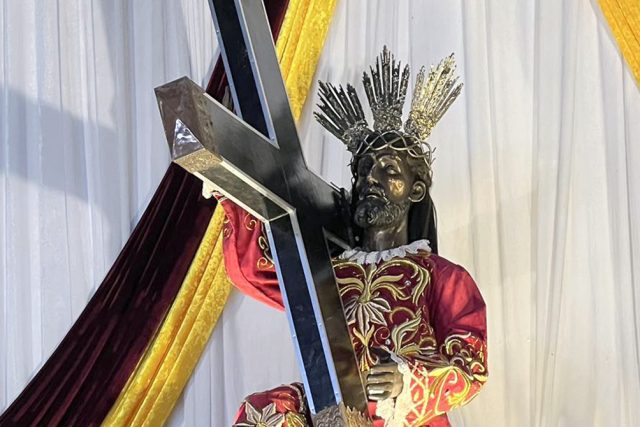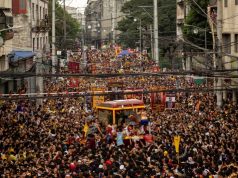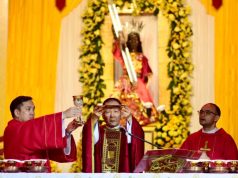
Manila is again bracing for the return of the anticipated “Traslacion” of the Black Nazarene, known as one of the world’s fervent displays of Catholic faith.
On Tuesday, January, 9, hundreds of thousands of barefoot devotees are expected to flock the streets for the traditional procession of the four centuries-old wooden statue of the Black Nazarene.
Known for its miracles, the depiction of Christ’s suffering as he carries the cross to Calvary is one of the most popular devotion in Asia’s most Catholic nation.
For the first time in Traslacion’s history, devotees will witness the image in a glass case for protection against damage. However, a portion of the Nazarene’s cross will be left open for devotees to touch.
Fr. Rufino “Jun” Sescon, the rector of Quiapo Church, mentioned that the image’s fragility was one of the reasons behind their decision to enclose it in a laminated tempered glass case, along with banning the climbing of the andas.
“Since it is already very old, we cannot predict what could happen if an extraordinary impact happens. It could lead to something worse,” Sescon said.
Since the 1990s, the original body of the image has been used in the procession, accompanied by a replica head and hands.
The original head, which already has a crack, is currently placed on the altar of Quiapo Church, while the original hands have been kept since they were destroyed.
“When the priest (at that time) saw that there were cracks in the head of the image, they decided to separate the parts,” Sescon said.
The priest revealed that the original body has already developed cracks due to the annual procession, where some devotees attempt to touch or grab hold of the image atop the andas (carriage).
“Through the years, the original body is the one we have been using so it has really sustained some cracks coming from those grabbing it,” he said.
Sescon said that if the condition of the original image is put in further danger, one option would be to use a replica for future processions.
“The Quiapo Church is considering that in the future, if the condition of the original image will be put in further danger, of course, we have to prioritize the care for the image,” the rector said.
“The idea is to gather all the original parts in the church. A replica will, then, be used in the procession. Even the Hijos del Nazareno agree with the idea because they want to protect the image,” he added.
Based on historical accounts, the image of the black Christ was brought to the Philippines by the Order of Augustinian Recollects (OAR) in 1606.
On the other hand, the annual Traslacion is believed to have begun sometime between 1767 and 1787 as a reenactment of the image’s transfer to the Quiapo Church from Intramuros.
The procession has been suspended for the past three consecutive years, from 2021 to 2023, due to Covid-19 restrictions.









